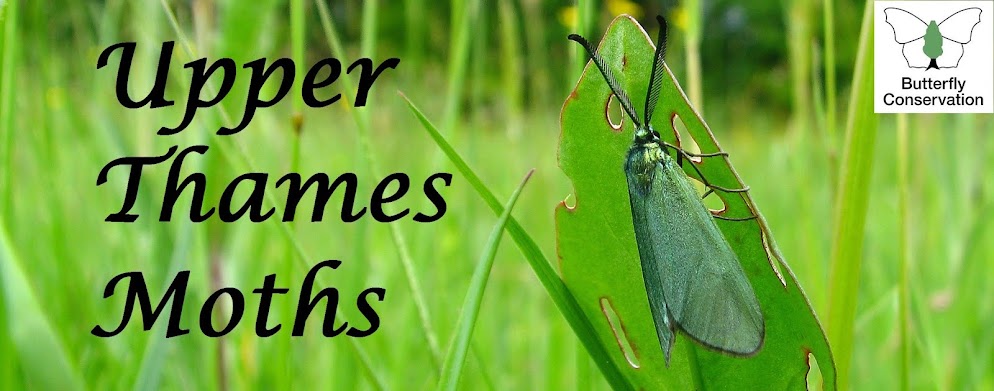Leaf mines are something I know almost nothing about. Like most people I suppose, I have noticed leaf mines on various plants all over the garden, but have never bothered to try and identify them, but I thought that I would make a start. My first photo is from a Beech leaf and using the website that Dave Wilton suggested a while back, www.leafmines.co.uk I have tentatively identified the species that made it as Stigmella hemargyrella. I would welcome any comments on this and suggestions on methods to further my identification of leaf mines.
Adam Bassett, Marlow Bottom


Hi Adam, Excellent, another convert! That is indeed a mine of Stigmella hemargyrella. As you will have seen from the web-site you looked at, on beech there are only two nepticulid mines (therefore mostly in corridors as in your picture, rather than the Phyllonorycters etc which produce blotches). Stigmella tityrella lays the egg against the leaf's mid-rib while S.hemargyrella lays the egg on the leaf edge. That's good enough for a record in this particular case, although (especially on oak) it is often better to have a 'live' mine so that you can see the characteristics of the larva too.
ReplyDeleteLooking for leaf-mines is a very good way of extending your garden list because many of the smallest moth species are difficult to identify as adults. It is, of course, worth bearing in mind that moths aren't the only things that mine leaves (some beetles, flies & saw-flies etc do too) but they seem to be the majority. I'd suggest you download and print off the mine guide (http://www.leafmines.co.uk/html/Mine_Guide.htm) so that you've got a handy reference in the field. Perhaps the most important thing is to ensure that you've identified the plant correctly first!
Searching for leaf-mines can be fascinating, and the number of different mines increases from now until quite late into the autumn: An hour after you set off you can find you've walked maybe no more than a couple of hundred metres - and you've got a whole bag of stuff to ID at the end! There's some real detective work to do and you can fairly easily find yourself extending the knowledge of natural history, because other insect groups are not all as well studied as moths. The website Dave has recommended contains a link to the Dutch equivalent and that is a very good site (with a good English version). If you try to raise any of the miners to adulthood you can end up with a strong challenge - and it is easy to see just how heavily parasitized most species are. As are, indeed, many of the parasites themselves. Good hunting.
ReplyDeleteAndy King.
Thanks both for your comments
ReplyDeleteBefore you go too far down this road, perhaps I should also mention the recording conventions for MapMate (which I assume you use for your records). The record should go in for the date you found the mine, with the stage as "Mine" if occupied or "Mine (vacated)" if no larva is present. The identity of the food-plant should be mentioned in the comments field. Should you decide to rear any mines through to the adult stage, then any data obtained ( emergence date, etc) is also something for the comments field.
ReplyDelete